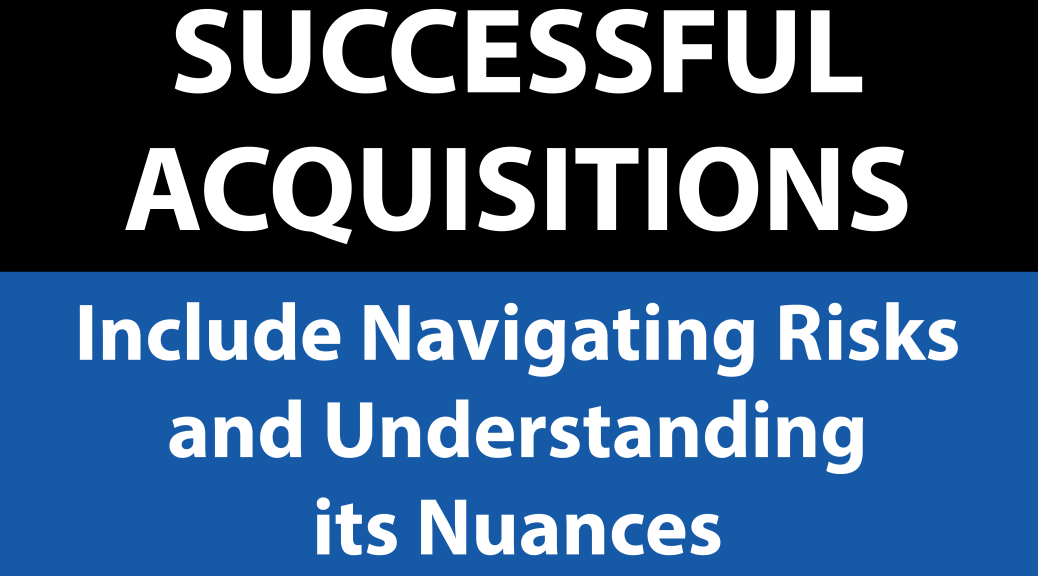Acquisitions can be both lucrative opportunities and potential minefields of risks. Understanding and effectively managing these risks is crucial for success. Among the myriad of risks, it’s essential to differentiate between controllable and uncontrollable risks, as well as early and late-stage risks. This nuanced understanding can make or break an acquisition deal. At The ProAction Group, we specialize in helping private equity companies navigate these complexities, ensuring informed decisions and managed risks.
Controllable Risks: Taking Charge of Operational Safety
Controllable risks are those directly influenced by behavior and operational decisions within the acquired company. For instance, safety hazards such as bypassing safety measures pose significant controllable risks. These risks stem from failures in appropriate setup and maintenance protocols. Addressing controllable risks requires proactive measures, such as reinforcing safety protocols, implementing robust training programs, and ensuring diligent maintenance practices. By identifying and addressing controllable risks, private equity firms can enhance operational safety and mitigate potential liabilities. Addressing controllable risk normally requires minimal capex. It requires attention.
Uncontrollable Risks: Managing External Factors
In contrast, uncontrollable risks are external factors beyond direct operational control, such as political instability or natural disasters. While these risks cannot be prevented, their impact can be mitigated through proper planning and preparation. Establishing response plans and training teams to handle unforeseen events, such as chemical spills or extreme weather incidents, is essential. By preparing for disruptions, companies can minimize the adverse effects of uncontrollable risks and maintain business continuity.
Early-Stage Risks: Preventing Potential Dangers
Early-stage risks represent latent hazards that have yet to manifest into tangible problems. These risks often exhibit subtle signs, such as disorganized workspaces or inadequate safety protocols. Addressing early-stage risks is cost-effective and relatively straightforward, requiring proactive measures such as training initiatives and infrastructure improvements. By identifying and rectifying early-stage risks, companies can prevent potential harm and avoid costly consequences down the line.
Late-Stage Risks: Dealing with Immediate Threats
Conversely, late-stage risks are imminent threats that have already materialized, posing immediate danger to employees and operations. These risks are characterized by visible deficiencies and complacency, such as ignored safety protocols or neglected maintenance issues. Rectifying late-stage risks is significantly more challenging, time-consuming, and costly, often necessitating extensive corrective measures and rehabilitation efforts. By addressing late-stage risks promptly, companies can mitigate harm and prevent possible damage to personnel and assets.
OpWise with The ProAction Group – Informed Decision-Making for Successful Acquisitions
At The ProAction Group, we recognize the critical importance of understanding and managing risks throughout the acquisition process. Our expertise lies in identifying controllable and uncontrollable risks, as well as distinguishing between early and late-stage risks. By leveraging our insights and methodologies, private equity can feel confident about their acquisitions with clear understanding of their target’s risk dynamics.







